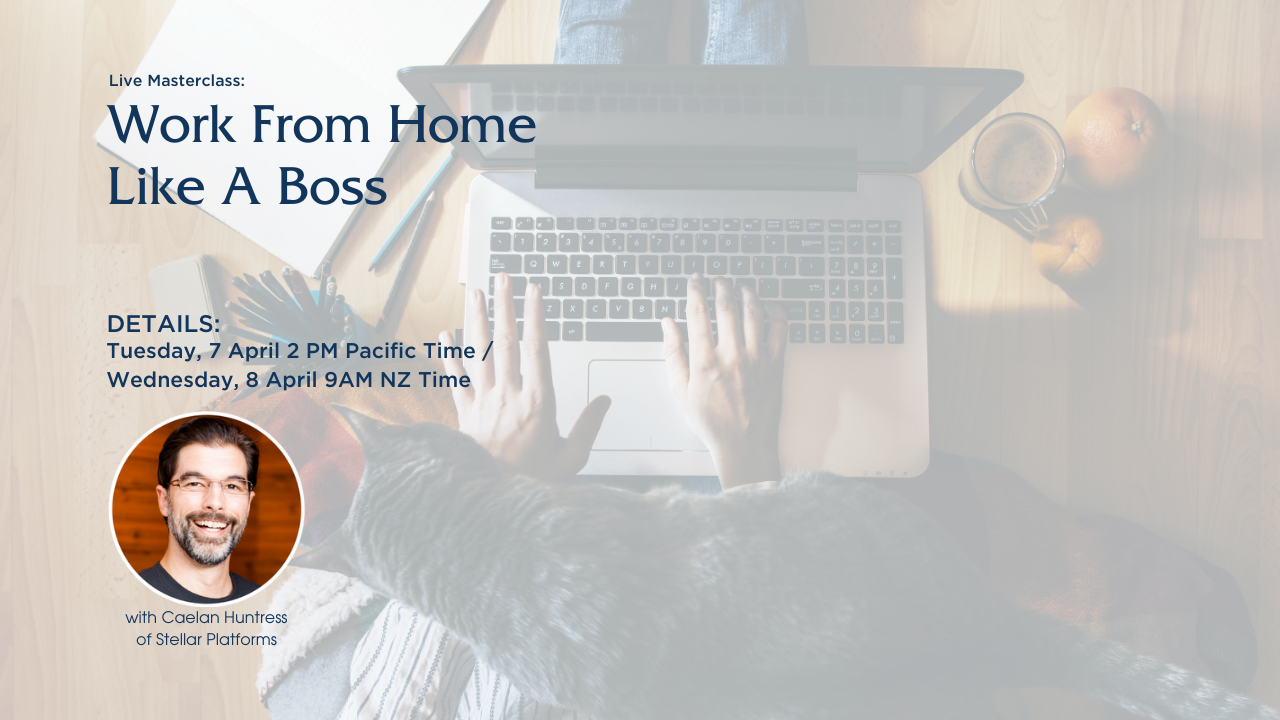SQUIRREL! Did something just take your attention? Run after it, nobody can stop you!
The greatest thing about working from home is your flexibility. But this is also a danger.
You have the ability to pivot your attention at a moment’s notice – and you don’t have to check with a board, or a boss, or anyone (except maybe your spouse) about how you want to spend your time in working from home.
This flexibility is the opposite of working in an office, with a boss looking over your shoulder. As a remote worker, you get to decide what to work on.
The best thing about this flexibility is -> you can guide your decisions by what brings you joy.
There’s a danger here, too – remote workers can also get distracted by fears and FOMO. We are more prone to copying what others are doing, because without other desks nearby where we can copy answers, if others are publishing how they do something, it seems like the right thing to do. We can end up wasting a whole lot of time and energy working on something that’s not profitable or successful, just because we see someone else do it.
That’s why it’s so important to practice discernment when you are working from home. Having good judgment, and making good strategic decisions, is more important for you than a regular employee in an office.
When an office employee makes a strategic mistake, they can get redirected quickly. But when a remote worker makes a strategic mistake, it might mean losing days (or weeks) of time and energy. For small business owners, the financial burden of this lost time is an additional penalty.
When you work from home, you are the employee, and your own supervisor, rolled into one.
You do the work, and decide the work.
Even if you are great at your craft, you also have to be a smart boss, too.

Working from home, you have to wear 2 caps: your Thinking Cap and your Doing Cap.
(Pro tip: Wear them one at a time.)
- Spend one block of time with your Thinking Cap on, deciding what to do.
- Spend a separate block of time with your Doing Cap on, actually doing the do. (Your supervisor is watching.)
If you spend time in dedicated Thinking Time, there is a switching cost to transition into Doing Time. Trying to wear both of these caps at once can reduce your productivity and effectiveness, and increase your stress and frustration.
By segmenting your day into Thinking Tasks and Doing Tasks, you can efficiently work on similar tasks with the same cap on – do all your Thinking tasks during one portion of your day, and batch your Doing tasks together, to maintain efficiency.
Separating these two Mindsets, and batching your work into different parts of your day, is something I discuss in my upcoming Masterclass, “Work From Home Like A Boss.”
How working from home can increase your outputDuring this live Masterclass next month (Wednesday morning for me in NZ, Tuesday afternoon in the US) I will share:
- Personal productivity and energy management techniques
- How to cultivate a remote culture with your team
- Warning signs of loneliness and depression
- Setting clear boundaries for your availability
Whether you are making the transition to remote work, or you have lots of experience in working from home but you want to increase your effectiveness and productivity, you’ll get a lot of value out of this Masterclass.
Register for the Masterclass Here
If you want to learn some Work From Home techniques right now, I just finished making 10 videos (under 3 minutes each) on my YouTube channel:







Leave A Comment